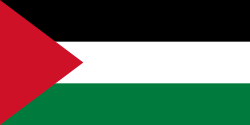Palestinian Poet Mosab Abu Toha Wins Pulitzer Prize for Commentary
 Palestinia
PalestiniaFollowing a ceasefire between Israel and Hamas that took effect on Sunday, displaced residents of Gaza returned to their hometowns only to find widespread devastation. In central Gaza's Al-Bureij area, locals described the destruction as comparable to an earthquake. A United Nations report estimated that around 50 million tonnes of rubble resulted from the conflict, which could take up to 21 years to clear and cost nearly $1.2 billion. Some debris is believed to be contaminated with asbestos.
In a positive development, humanitarian aid has begun flowing into Gaza, providing much-needed relief to residents facing hunger amid winter conditions. Currently, 600 truckloads of food and fuel are permitted to enter Gaza daily during the initial six-week ceasefire, with half designated for the northern regions, where famine concerns are rising.
As families navigate their new reality, many expressed mixed emotions—relief at the cessation of hostilities but deep sadness for lost loved ones and their altered lives. A mother of nine reflected on their first night free from the sounds of bombing, noting the lasting scars of war even amidst a newfound sense of safety.
 Palestinia
Palestinia Palestinia
Palestinia Palestinia
Palestinia